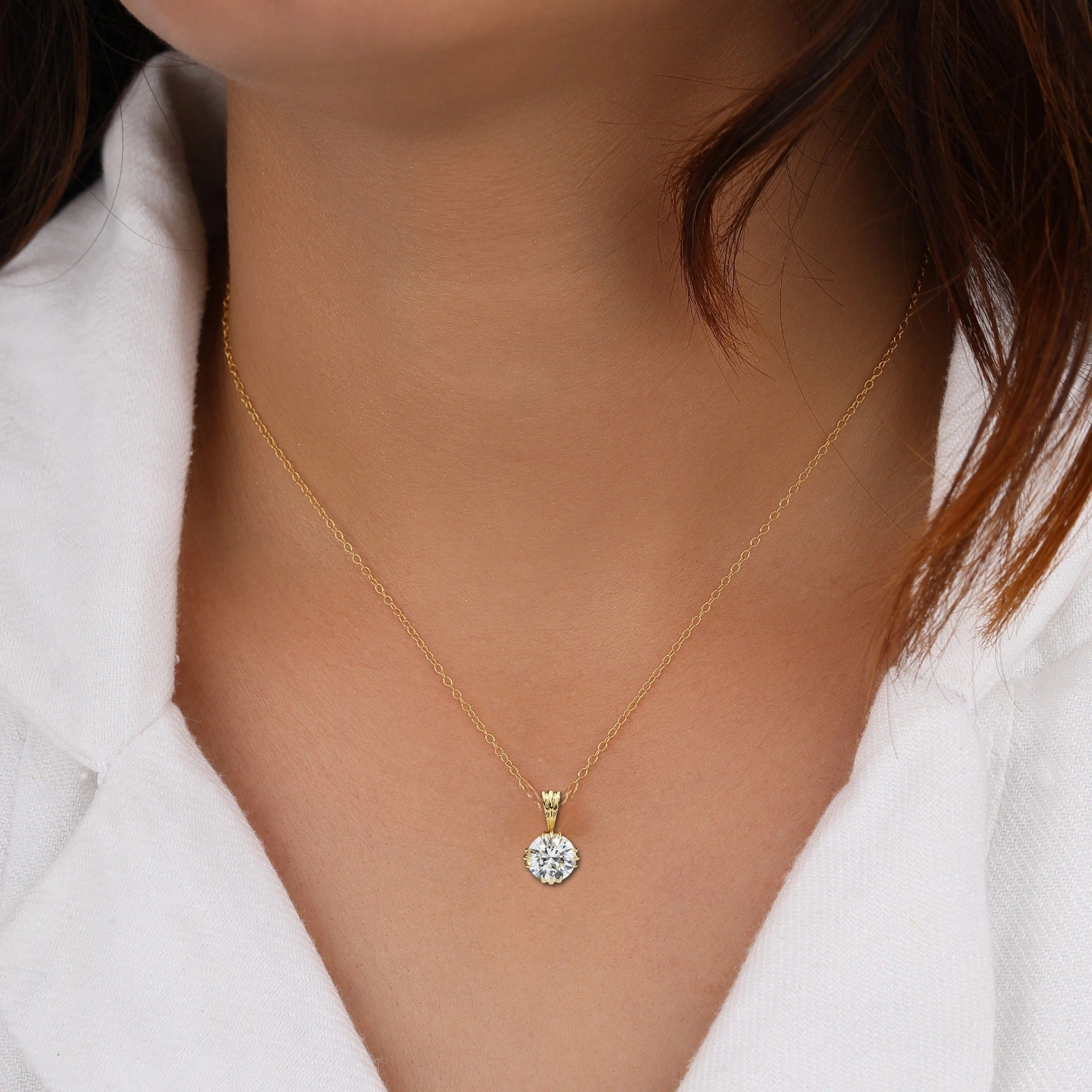Eco-Friendly Recycled Gold Jewelry Guide
Choosing between solid white gold, yellow gold, rose gold, platinum or palladium is primarily a style preference. However, your recycled metal choice contributes to the value and wearability of your setting and should be a factor in the final selection. At Carbonera every setting is created using only the finest eco-friendly recycled precious metals - solid gold, 950 pure platinum or 950 pure palladium from refineries that represent our commitment to the earth. Eco-friendly recycled metals you’ll love for their beauty and be proud to wear for their minimal impact on the environment.
What is Eco-Friendly Recycled Gold?
Eco-friendly recycled gold is gold that has been recovered from previously used jewelry, electronics, or other metal products, then refined and repurposed into new jewelry. By utilizing this process, recycled gold helps reduce the environmental impact of mining, conserves natural resources, and supports sustainable practices in the jewelry industry.
Why Choose Recycled Gold?
- Environmental Benefits
Traditional gold mining is a resource-intensive process that often leads to deforestation, water contamination, and the destruction of ecosystems. By using recycled gold, we avoid these environmental consequences. The recycling process uses far less energy compared to mining new gold, making it a more eco-friendly option for jewelry production. - Ethical Sourcing
Recycled gold eliminates the need for new mining, which is often linked to unethical practices, including labor exploitation and environmental degradation. Using recycled gold ensures that your jewelry is produced in a more responsible and ethical manner. - Energy Efficiency
Gold recycling is much more energy-efficient than traditional mining, as it requires significantly less energy to recycle and purify the gold, reducing the overall carbon footprint associated with gold production. - High Quality
Recycled gold undergoes a refining process to remove impurities, ensuring it meets the same high-quality standards as newly mined gold. The gold retains its durability and beauty, offering the same long-lasting value.
Types of Recycled Gold
- White Gold
White gold is an alloy made by mixing yellow gold with other white metals, such as palladium, silver, and nickel. Recycled white gold maintains the same appearance and durability as new white gold. However, it requires periodic maintenance, including rhodium plating to retain its bright white finish.
Durability and Maintenance: Recycled white gold is slightly softer compared to platinum but is still durable enough for daily wear. Over time, it may develop a yellowish tint, which can be restored with rhodium plating.
Hardness Rating: 14K White Gold: 100-165 HV, 18K White Gold: 80-220 HV
Makeup: 14K White Gold: 58.5% gold, 12% copper, 8% nickel, 6% zinc, 4.5% silver. 18K White Gold: 75% gold, 10% copper, 8% nickel, 4.5% zinc, 2.5% silver.
Price: 14K white gold is generally more affordable compared to 18K white gold due to its lower gold content. - Yellow Gold
Yellow gold is made by alloying gold with copper and silver. Recycled yellow gold maintains its traditional warm hue, and unlike white or rose gold, it does not require additional metals to achieve its color.
Durability and Maintenance: Yellow gold is relatively soft compared to platinum or titanium but is still strong enough for most jewelry. Over time, it may develop a patina that adds to its charm. Regular polishing helps maintain its luster.
Hardness Rating: 14K Yellow Gold: 100-165 HV, 18K Yellow Gold: 80-220 HV
Makeup: 14K Yellow Gold: 58.5% gold, 29% copper, 12.5% silver. 18K Yellow Gold: 75% gold, 15% copper, 10% silver.
Price: 14K yellow gold is more affordable than 18K yellow gold due to its lower gold content. - Rose Gold
Rose gold is created by alloying yellow gold with copper, giving it its distinctive pink hue. Recycled rose gold retains its beautiful color and is an excellent choice for those seeking a warm, vintage-inspired look.
Durability and Maintenance: Rose gold is a bit softer than yellow and white gold due to the higher copper content. It can develop a patina over time, but this is often seen as a desirable feature. Regular cleaning and polishing help maintain its appearance.
Hardness Rating: 14K Rose Gold: 100-165 HV, 18K Rose Gold: 80-220 HV
Makeup: 14K Rose Gold: 58.5% gold, 29% copper, 12.5% silver. 18K Rose Gold: 75% gold, 15% copper, 10% silver.
Price: 14K rose gold is typically more affordable than 18K rose gold due to its lower gold content.
How Recycled Gold is Processed
Recycled gold is sourced from old jewelry, electronics, or scrap metal. It is then melted down and refined to remove impurities, ensuring it is of the highest quality. Once refined, the gold is realloyed with other metals to achieve the desired characteristics, such as 14K or 18K purity. This recycling process helps conserve natural resources, as less energy is required compared to traditional gold mining, making it a more sustainable option.
Benefits of Recycled Gold Jewelry
- Sustainability
Recycled gold significantly reduces the need for new gold mining, which helps conserve natural resources and minimize the harmful environmental impact associated with traditional mining practices. - Durability and Value
Gold is one of the most durable metals used in fine jewelry. Recycled gold retains the same strength and beauty, ensuring that your jewelry will last for years while offering timeless value. - Ethical Sourcing
Recycled gold eliminates the ethical issues associated with traditional gold mining, such as labor exploitation and unsafe working conditions, ensuring that your jewelry is produced responsibly.
Reduced Carbon FootprintRecycling gold produces far fewer emissions compared to mining new gold, resulting in a smaller carbon footprint. By choosing recycled gold, you help reduce the environmental impact of jewelry production.





